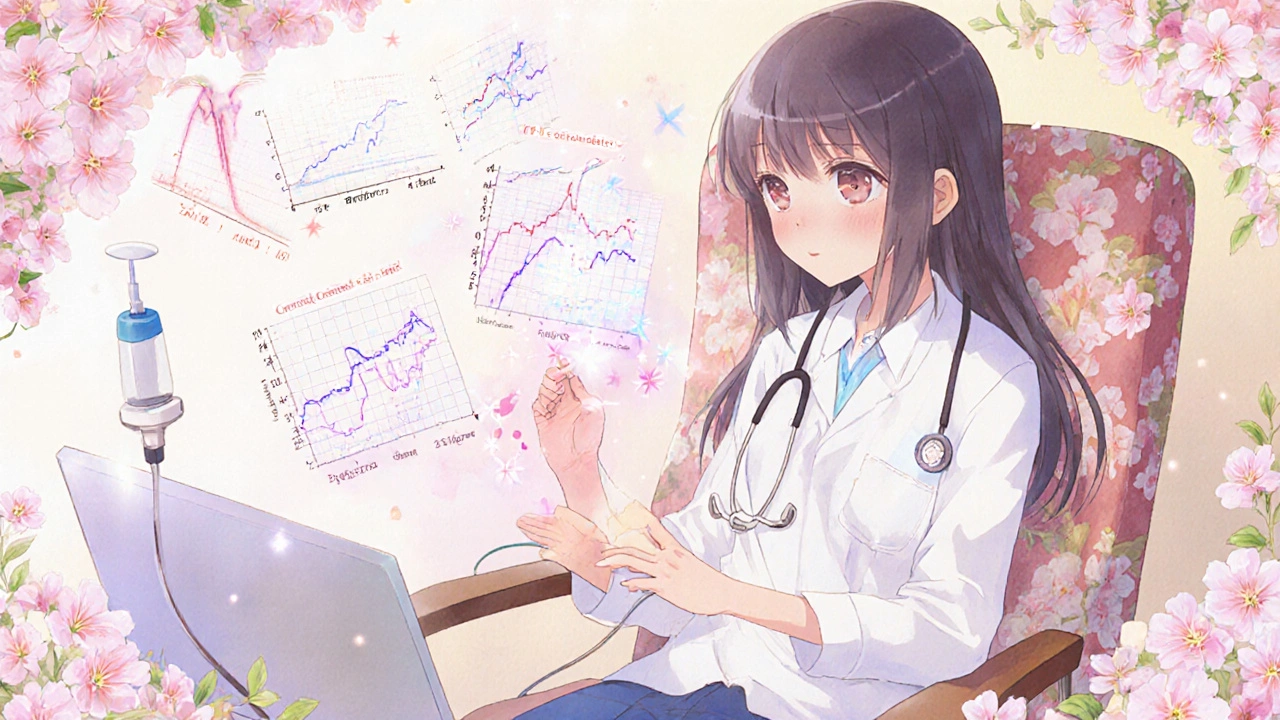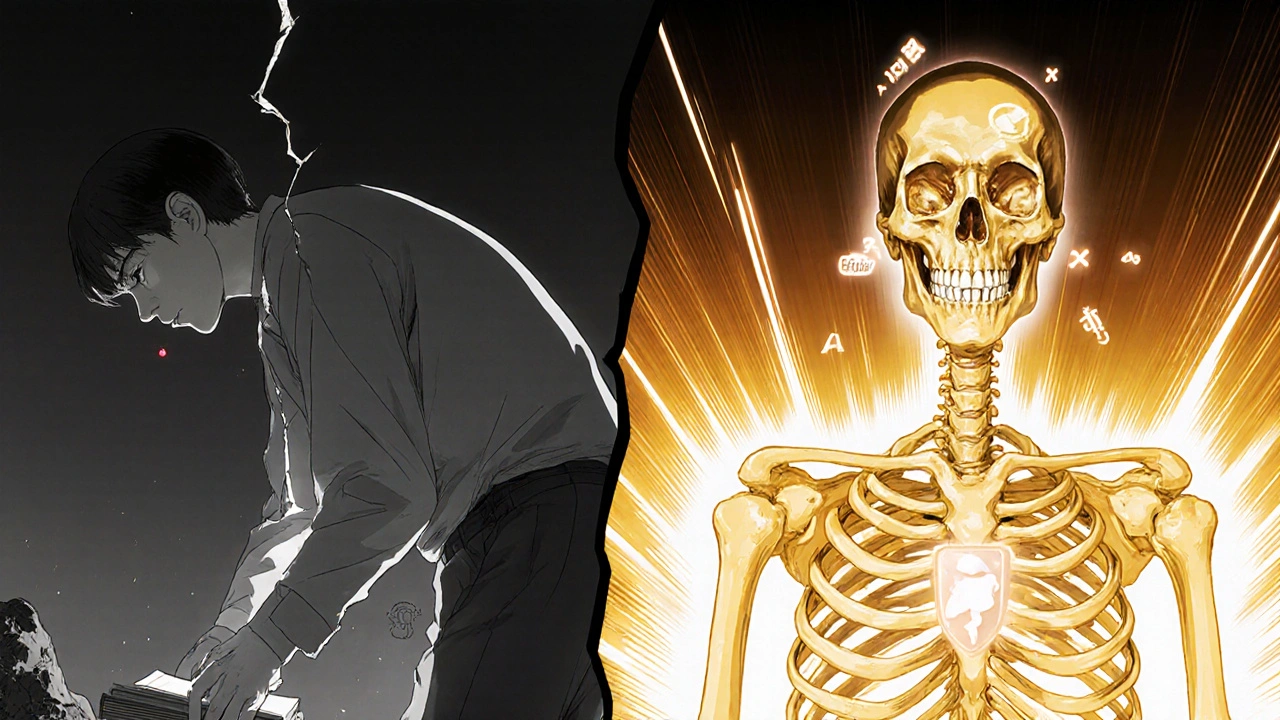Preventing Steroid-Induced Osteoporosis: Calcium, Vitamin D, and Bisphosphonates

Steroid-Induced Osteoporosis Prevention Calculator
Your Steroid Details
Personal Risk Factors
Your Personalized Recommendations
Why Steroids Can Break Your Bones
If you're taking steroids for conditions like rheumatoid arthritis, lupus, or asthma, you might not realize you're putting your bones at serious risk. Even short-term use can start weakening your skeleton within just a few months. This isn't just about getting older-it's about how steroids directly attack your bone-building cells. Glucocorticoids, the type of steroids most commonly prescribed, don't just reduce inflammation. They shut down osteoblasts, the cells responsible for making new bone, while simultaneously turning up the activity of osteoclasts, the cells that break bone down. The result? You lose bone faster than your body can replace it.
Studies show that 30% to 50% of people on long-term steroid therapy develop osteoporosis. And it’s not subtle: about 12% of patients taking 7.5 mg or more of prednisone daily will suffer a vertebral fracture within the first year. That’s 5 to 17 times higher than someone not on steroids. These fractures can happen without trauma-just from bending over or coughing. And unlike typical age-related bone loss, steroid-induced bone damage hits fast and hard, often before most people even think to get a bone scan.
The Foundation: Calcium and Vitamin D
Before you even think about drugs, you need to lay the groundwork. Calcium and vitamin D aren’t optional extras-they’re the minimum standard of care for anyone starting steroids for more than three months. The American College of Rheumatology recommends 1,000 to 1,200 milligrams of calcium daily and 600 to 800 IU of vitamin D. If your blood level of vitamin D is below 30 ng/mL, bump it up to 800-1,000 IU daily.
Calcium isn’t just about what you eat. Most people don’t get enough from diet alone. A cup of milk has about 300 mg. A serving of yogurt? Around 250 mg. That means you’d need at least three to four servings of dairy or fortified alternatives just to hit the low end of the recommendation. Many people turn to supplements, and that’s fine-just make sure you’re not taking more than 600 mg at once. Your body can’t absorb it all. Spread your doses out: 500 mg with breakfast, another 500 mg with dinner.
Vitamin D is trickier. Sunlight helps, but if you live in Austin and work indoors, wear sunscreen, or have darker skin, your body isn’t making enough. Blood tests are the only way to know your level. Without enough vitamin D, your body can’t absorb calcium, no matter how much you take. That’s why these two work together. You can’t fix one without the other.
Bisphosphonates: The First-Line Shield
When you’re on steroids long-term, calcium and vitamin D alone aren’t enough. That’s where bisphosphonates come in. These drugs-like alendronate (Fosamax) and risedronate (Actonel)-are the most studied, most prescribed, and most cost-effective way to stop steroid-related bone loss. They work by slowing down osteoclasts, the bone-breakers, giving your osteoblasts a fighting chance to rebuild.
Large clinical trials show bisphosphonates reduce vertebral fracture risk by about 43%. In one study, people taking alendronate gained 3.7% bone density in their spine in just one year, while those on placebo lost 1.7%. That’s not just a number-it’s a real, measurable protection against broken bones.
Most people take these pills once a week. But there’s a catch: you have to take them right. You need to swallow them on an empty stomach with a full glass of water, then stay upright for at least 30 minutes. No lying down. No eating. No coffee. No other meds. If you don’t follow the rules, you risk serious esophageal irritation. About 15% to 25% of people have stomach upset or heartburn. That’s why some switch to the yearly IV version-zoledronic acid. It’s just one 15-minute infusion per year, and studies show it works even better than oral pills, especially for hip bone density.

When Bisphosphonates Aren’t Enough
Not everyone responds to bisphosphonates. If you’ve already had a fracture, your T-score is below -2.5, or you’re over 65 with multiple risk factors, you might need something stronger. That’s where teriparatide (Forteo) comes in. Unlike bisphosphonates, which slow bone loss, teriparatide actually stimulates new bone growth. It’s a daily injection that mimics a natural hormone your body uses to build bone.
In one major study, people on teriparatide had only a 0.6% chance of a new vertebral fracture over 18 months. Those on alendronate? 6.1%. That’s a huge difference. But teriparatide isn’t cheap-around $2,500 a month compared to $250 for generic bisphosphonates. It’s also limited to two years of use because of a rare but serious risk of bone cancer in lab animals (though no evidence of this in humans). You can’t use it if you’ve had radiation to your bones, Paget’s disease, or certain cancers.
Another option is denosumab (Prolia), a biologic injection given every six months. It reduces vertebral fracture risk by 79%, and it’s easier to take than daily pills or injections. But if you stop it, you can lose bone quickly, so you need to switch to another drug right away. It’s also not recommended if you have very poor kidney function.
Who Needs What? The Real-World Guide
Not everyone needs the same treatment. The American College of Rheumatology gives clear guidance based on age and risk:
- If you’re 40 or older and taking 2.5 mg or more of prednisone daily for three months or longer-you need a bisphosphonate.
- If you’re under 40 but already had a fragility fracture or have other risk factors like low body weight or smoking-you still need treatment.
- If you’re high-risk (prior fracture, T-score ≤ -2.5, or FRAX score over 20%), teriparatide is the better choice.
- If you can’t tolerate oral bisphosphonates due to stomach issues or kidney problems, switch to IV zoledronic acid or denosumab.
And here’s the hard truth: only about 19% of people who should be on these drugs actually get them. Doctors miss it. Patients don’t know. Insurance doesn’t always cover it. But if you’re on steroids, this isn’t something you can ignore.

Monitoring and Long-Term Care
You can’t just start treatment and forget about it. You need to track your bone density. A DXA scan (a low-dose X-ray of your spine and hip) should be done before you start steroids, then again at 12 months. If your bone density drops more than 5% in a year, your treatment needs to change. That’s a red flag.
Most people stay on bisphosphonates for 3 to 5 years. After that, your doctor might take you off for a while-called a “drug holiday”-to reduce the risk of rare side effects like atypical femur fractures or jaw bone problems. But if you’re still on steroids, you can’t stay off bone protection forever. You’ll likely need to restart or switch to another drug.
For those on teriparatide, the two-year limit means you’ll need to follow up with a bisphosphonate or denosumab afterward to keep your gains. Skipping that step is like building a house and then removing the foundation.
The Bottom Line
Steroids save lives. But they also steal bone strength. The good news? You can protect yourself-if you act early. Start with calcium and vitamin D the day you begin steroids. Get your bone density checked. Ask your doctor if you need a bisphosphonate. Don’t wait for a fracture to happen. The data is clear: prevention works. The real problem isn’t the medicine-it’s the delay. Too many people wait until it’s too late. You don’t have to be one of them.

Gabe Solack
November 18, 2025 AT 12:42Yash Nair
November 20, 2025 AT 04:34Girish Pai
November 22, 2025 AT 04:04Kristi Joy
November 22, 2025 AT 07:56Hal Nicholas
November 24, 2025 AT 01:00Katelyn Sykes
November 24, 2025 AT 22:57Holly Powell
November 26, 2025 AT 13:29Emanuel Jalba
November 27, 2025 AT 22:51Brenda Kuter
November 29, 2025 AT 03:13Shaun Barratt
November 30, 2025 AT 04:52Sarah Frey
December 1, 2025 AT 10:09Louie Amour
December 1, 2025 AT 15:56Kristina Williams
December 3, 2025 AT 01:40Shilpi Tiwari
December 3, 2025 AT 17:42